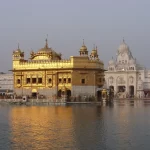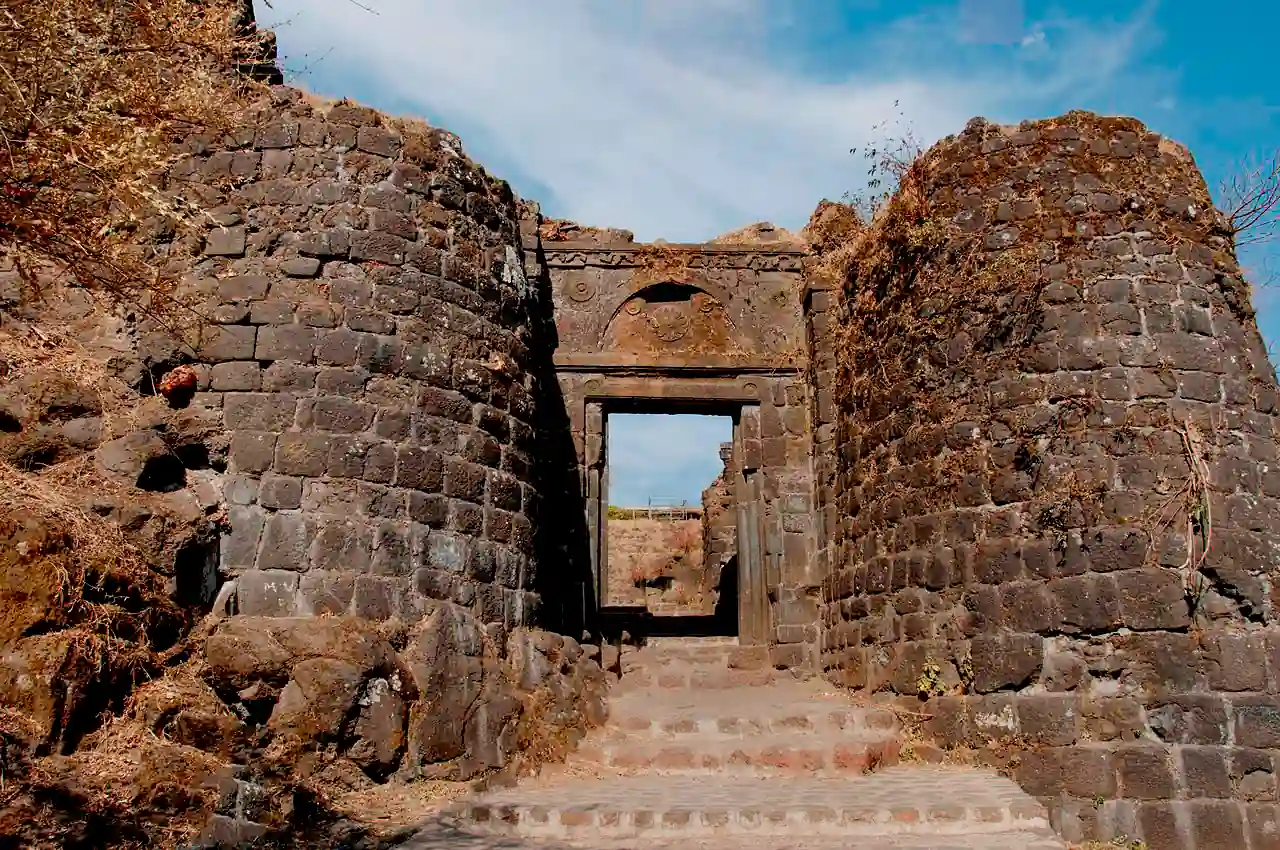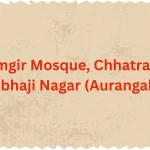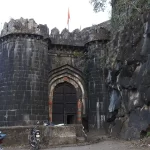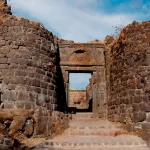Unveiling the Lion’s Fort: A Timeless Sentinel of Valour, History, and Natural Grandeur
Ready to step into history? Lace up your trekking shoes and conquer Sinhagad Fort. Share your adventure with #SinhagadExplorer!
🔴 Introduction: The Legacy of Sinhagad Fort
Perched 1,312 meters above sea level on the Sahyadri range, Sinhagad Fort (Lion’s Fort) is more than a historic landmark—it’s a symbol of Maratha pride, resilience, and natural beauty. Once known as Kondhana, this fortress has witnessed legendary battles, housed visionary leaders, and inspired generations with tales of sacrifice. Just 35 km from Pune, Sinhagad offers a perfect blend of adventure, history, and panoramic vistas, making it a must-visit for travellers and history buffs alike.
➤ Why Sinhagad Stands Apart
⦿ Historical Significance: The 1670 Battle of Sinhagad, led by Tanaji Malusare, reshaped Maratha history.
⦿ Architectural Brilliance: Strategic design with steep slopes, hidden gates, and rainwater harvesting systems.
⦿ Cultural Hub: A pilgrimage site for patriots, trekkers, and foodies craving authentic Maharashtrian cuisine.
➤ Local Insight:
Rajesh Patil, a Pune-based historian, shares, “Sinhagad isn’t just a fort—it’s where Maharashtra’s soul resides. Every stone here whispers tales of bravery”.
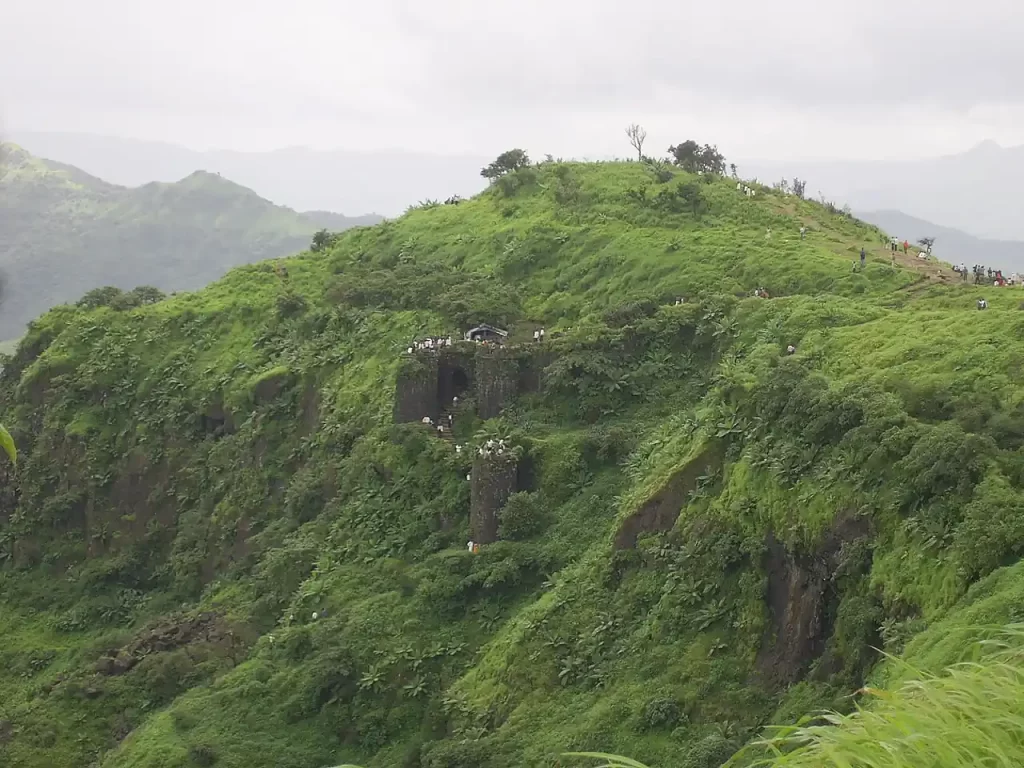
🟢 Detailed Historical Introduction:
Ready to walk in the footsteps of legends? Plan your Sinhagad trip today! 🦁🏞️
Historical Introduction to Sinhagad Fort: A Saga of Power, Valour, and Legacy
🔘 Ancient Origins: The Birth of Kondhana
Sinhagad Fort’s history stretches back over 2,000 years, rooted in the era of the Buddhist monk Kaundinya, after whom the fort was originally named Kondhana. Early inscriptions and carvings suggest it served as a spiritual retreat and strategic outpost for ancient dynasties. By the 8th century CE, the Rashtrakutas fortified the site to guard trade routes traversing the Sahyadri Mountains. Its strategic elevation—perched 1,312 meters above sea level—made it a coveted prize for emerging powers in the Deccan.
🔘 Medieval Struggles: From Kolis to the Delhi Sultanate
In the 14th century, Kondhana was under the control of Nag Nayak, a Koli tribal chieftain renowned for his guerrilla warfare tactics. The fort’s impregnability caught the eye of Delhi Sultan Muhammad bin Tughluq, who besieged it for eight gruelling months in 1328. According to historian Ferishta, the Kolis fought fiercely but eventually succumbed to the Sultan’s forces, marking the fort’s first major transition into the hands of a North Indian empire.
🔘 The Bahmani and Nizam Shahi Era
After the collapse of the Tughluq dynasty, Kondhana became a pawn in the Deccan’s shifting alliances. The Bahmani Sultanate seized it in the late 14th century, using it to launch raids into the Maratha heartland. By 1485, the Ahmadnagar Sultanate (Nizam Shahis) took control, further strengthening its defences. During this period, the fort evolved into a symbol of Islamic architectural influence, with bastions and gates reflecting Persian military design.
Also Read
Ajanta Caves Guide- Timings, Entry, History, Travel Tips & More
🔘 Adil Shahi Rule and Chhatrapati Shivaji’s First Capture
In the early 16th century, the fort fell to the Adil Shahi dynasty of Bijapur. It was under their rule that a young Chhatrapati Shivaji Maharaj, then a vassal of the Adil Shahis, first captured Kondhana in 1647 through cunning diplomacy. By convincing the fort’s commander, Siddi Amber, to defect, Shivaji showcased his early genius for blending strategy with statecraft. However, in 1649, he was forced to return the fort to secure the release of his imprisoned father, Shahaji Bhosale.
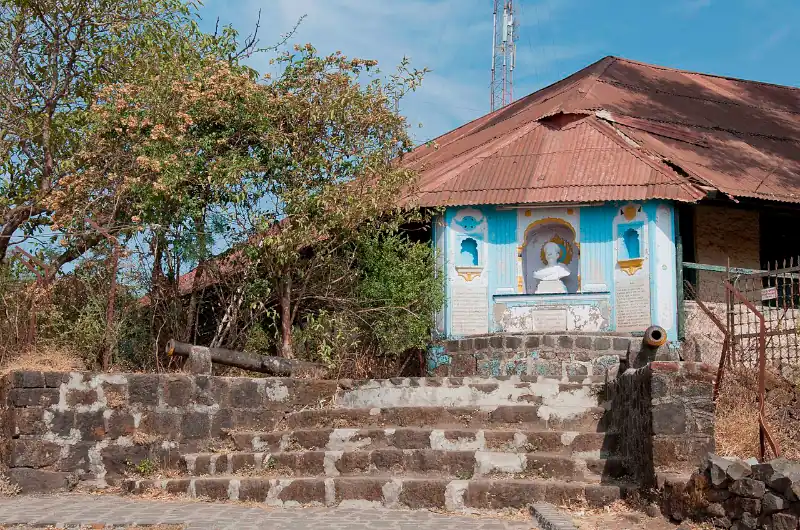
🔘 Chhatrapati Shivaji’s Triumphant Return in 1656
Undeterred by setbacks, Shivaji reclaimed Kondhana in 1656 through another masterstroke of negotiation. His Brahmin general, Bapuji Mudgal Deshpande, persuaded the Adilshahi commander to surrender by offering him land grants in the nearby village of Khed Shivapur. This bloodless victory marked the fort’s permanent integration into the Maratha Empire and underscored Shivaji’s ability to outthink, not just outfight, his rivals.
🔘 The Mughal Onslaught and Treaty of Purandar
The fort’s strategic value drew repeated Mughal invasions. In 1662, Aurangzeb’s general Shaista Khan laid siege but failed to breach its defences. A second attempt in 1665, led by Rajput commander Jai Singh I, forced Shivaji into the Treaty of Purandar, ceding Kondhana and 22 other forts to the Mughals. This humiliation, however, set the stage for one of the most legendary chapters in Maratha history.
🔘 The Battle of Sinhagad (1670): Tanaji’s Sacrifice
On a moonless night in February 1670, Shivaji’s general Tanaji Malusare led 300 Maval warriors in a daring assault. Using a Ghorpad (Monitor lizard) tied with ropes to scale the fort’s sheer cliffs, Tanaji’s forces ambushed the Mughal garrison led by Rajput commander Udaybhan Rathod. The battle raged fiercely, claiming Tanaji’s life, but his brother Suryaji secured victory. Chhatrapati Shivaji’s lament — “गड आला पण सिंह गेला” [English – “Gad ala, pan Sinha gela”] (The fort is won, but the lion is lost) — immortalised both the hero and the fort, now renamed Sinhagad (Lion’s Fort).
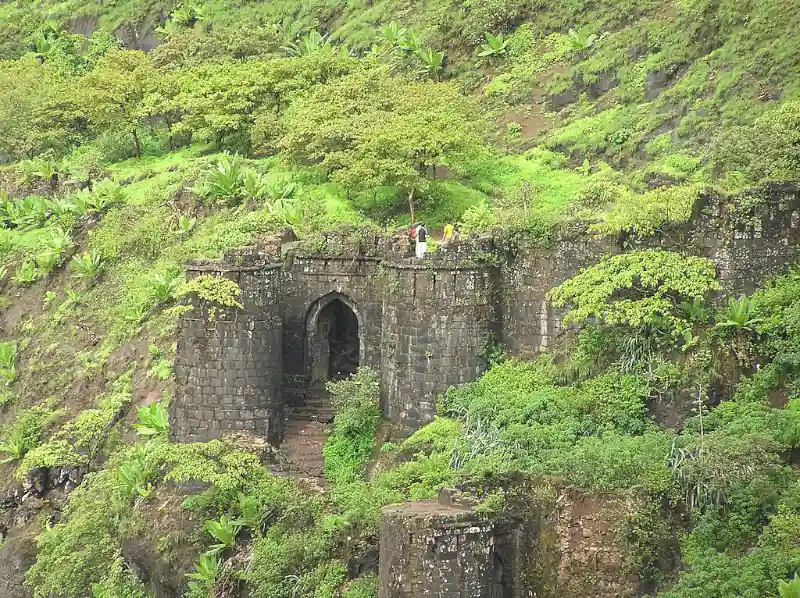
🔘 Post-Shivaji Turmoil: Marathas, Mughals, and British
After Chhatrapati Shivaji’s death in 1680, Sinhagad became a flashpoint in the Maratha-Mughal wars. Aurangzeb captured it in 1689, but Maratha generals like Santaji Ghorpade and Ramchandra Pant Amatya reclaimed it by 1693. During Rajaram I’s reign, the fort served as a refuge from Mughal invasions, and it was here that the Maratha king drew his last breath in 1700. The British finally seized Sinhagad in 1818 during the Third Anglo-Maratha War, ending its military relevance but cementing its legendary status.
🔘 Architectural Evolution: A Fortress Built to Last
While Sinhagad’s history is steeped in bloodshed, its architecture reveals a pragmatic brilliance. The Marathas enhanced its natural defences with camouflaged walls, hidden reservoirs like the Tanaji Kunda, and dual gateways (Pune Darwaza and Kalyan Darwaza) designed to trap invaders. It’s 54 water cisterns ensured survival during sieges, while secret tunnels provided escape routes—a testament to the Maratha emphasis on sustainability and stealth.
🔘 Legacy: From Battleground to Cultural Icon
Today, Sinhagad stands not just as a relic of war but as a cultural touchstone. It hosted Lokmanya Bal Gangadhar Tilak’s clandestine meetings during India’s freedom struggle and inspired generations through ballads and films like Tanhaji (2020). Its walls, though scarred by time, continue to echo the valour of Tanaji and the visionary leadership of Shivaji—a reminder that history is not just written in ink, but in blood, stone, and collective memory.
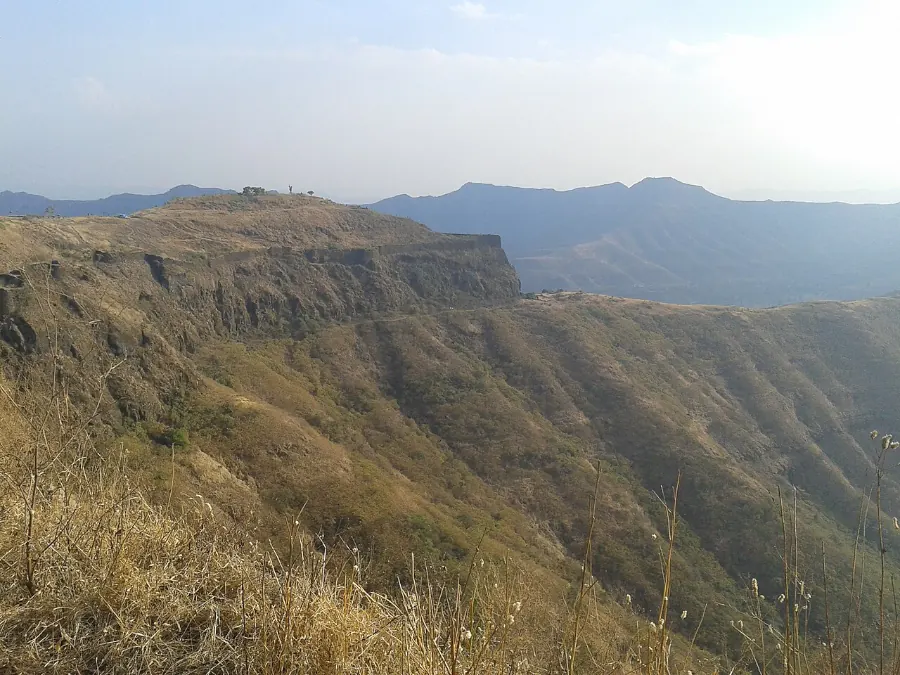
🟣 History: From Kondhana to Sinhagad
⭕ Early Origins (Pre-14th Century)
Kondhana’s history traces back to the 2nd century BCE, linked to the Buddhist monk Kaundinya. By the 14th century, the Koli chieftain Nag Nayak ruled here until Delhi Sultanate forces seized it in 1328 after an 8-month siege.
➤ Under Bahmani Sultanate & Mughals
The fort changed hands between the Bahmani Sultanate, Nizam Shahis, and Adil Shahis. In 1649, Chhatrapati Shivaji traded it for his father’s freedom but reclaimed it in 1656 through diplomacy.
➤ The Epic Battle of 1670
The fort’s defining moment came when Tanaji Malusare scaled its walls using a monitor lizard (Ghorpad) and clashed with Mughal commander Udaybhan Rathod. Though Tanaji died, his brother Suryaji secured victory. Shivaji’s lament, “गड आला पण सिंह गेला” [English – “Gad ala, pan Sinha gela”] (The fort is won, but the lion is lost), immortalised the fort’s renaming.
➤ Post-Shivaji Era & British Takeover
After Shivaji’s death, the Mughals recaptured Sinhagad, but the Marathas reclaimed it in 1693. By 1818, the British seized it during the Third Anglo-Maratha War, ending its military use.
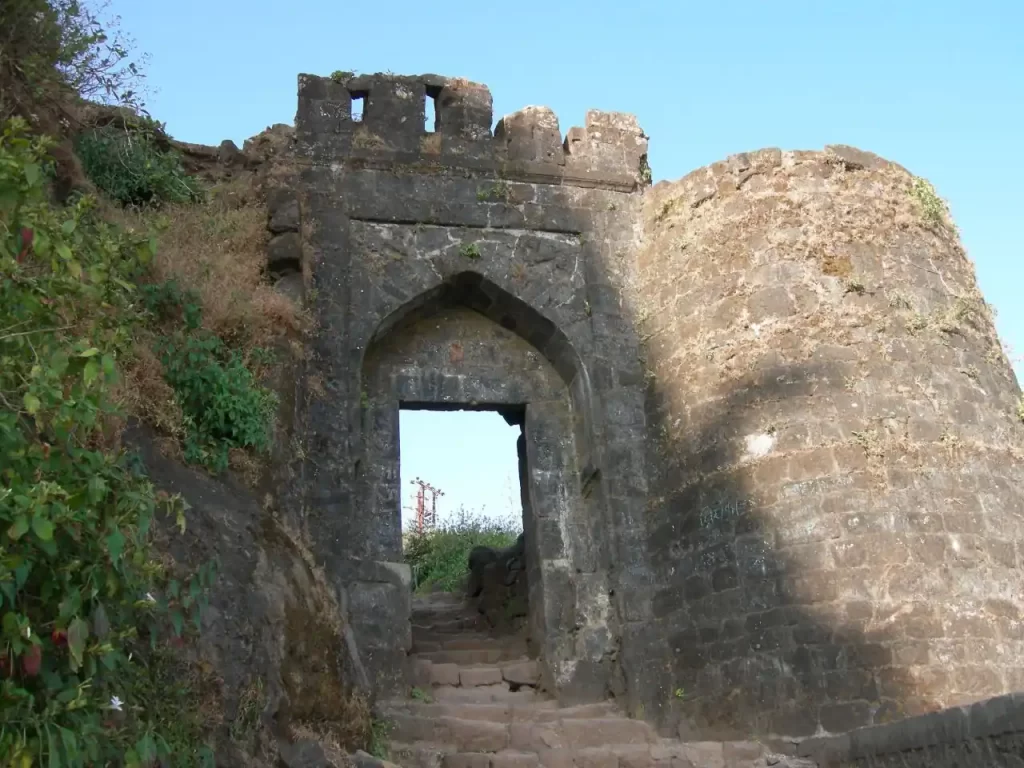
⭕ Architecture: A Masterclass in Defence
⦿ Strategic Design: Steep cliffs and two main gates (Pune Darwaza and Kalyan Darwaza) deterred invaders.
⦿ Water Management: 54 water reservoirs, including the Tanaji Kunda, ensured year-round supply.
⦿ Structures: The Kali Temple, Tanaji’s bust, and Tilak’s bungalow highlight its cultural layers.
Did You Know? The fort’s walls were designed to blend with the terrain, making it nearly invisible from a distance!
⭕ Distance from Major Indian Cities
| City | Distance (km) | Travel Time (hrs) |
| Mumbai | 165 km | 3.5 hrs |
| Hyderabad | 560 km | 10 hrs |
| Bangalore | 840 km | 14 hrs |
| Delhi | 1,400 km | 24 hrs |
⭕ Things to Do at Sinhagad Fort
⦿ Trekking: Choose between the 2.7-km Sinhagad Village trail (moderate) or the steeper Kalyan Darwaza route.
⦿ Historical Tour: Explore the Kali Temple, military barracks, and Tanaji’s memorial.
⦿ Local Cuisine: Relish Pithla-Bhakri and Kanda Bhaji at hillside stalls.
⦿ Photography: Capture sunrise views over the Sahyadris or mist-covered valleys in monsoon.
➤ Pro Tip: Visit mid-week to avoid crowds and enjoy serene trails.
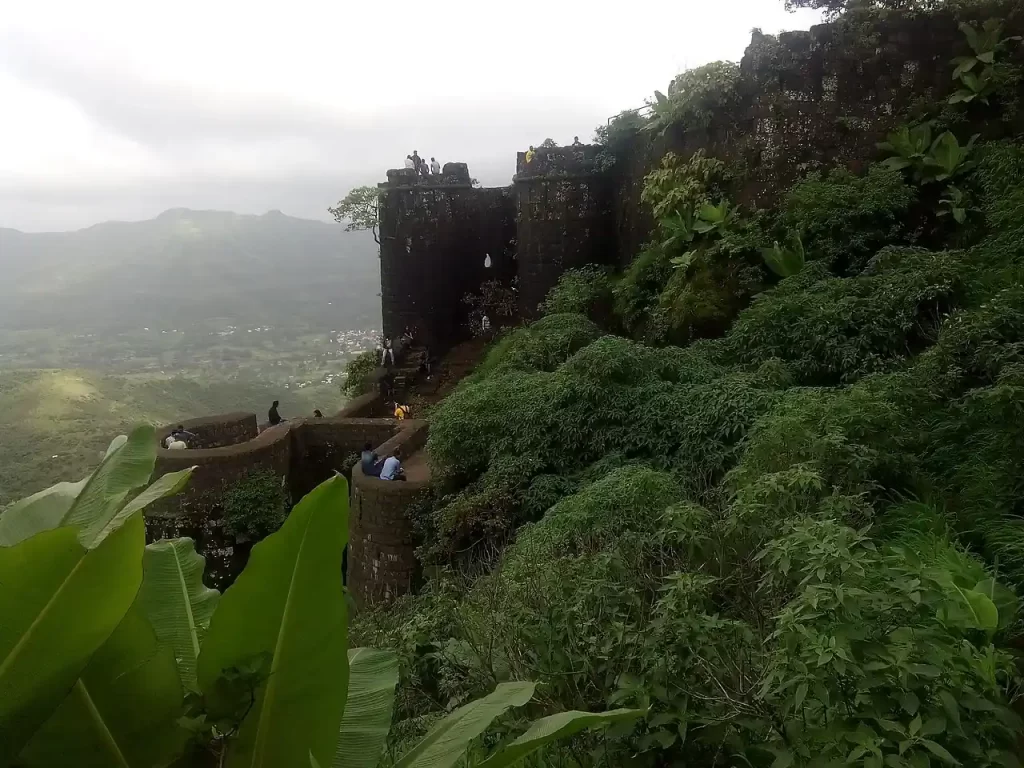
⭕ Travel Tips & Climate
⦿ Best Time to Visit: October–February for trekking; July–September for lush greenery.
⦿ Weather: Summers (25–35°C), monsoons (heavy rainfall), winters (10–25°C).
⦿ Essentials: Water, trekking shoes, sunscreen, and a hat.
⭕ Demographics & Economy
⦿ Taluka: Haveli (Pune District).
⦿ Languages: Marathi, Hindi, English.
⦿ Economy: Agriculture (pomegranates, sugarcane) and tourism drive local livelihoods.
➤ FAQs
Is Sinhagad Fort kid-friendly?
Yes, but supervise children on steep trails.
Best spot for photography?
The cliff near Tanaji’s bust at sunrise—golden light bathes the entire valley.
Are guides available?
Local guides charge ₹300–500 for historical tours.
Entry fees?
Free! Only parking (₹50–100) applies.
➤ Conclusion
The Fort That Never Sleeps
Sinhagad isn’t just a relic—it’s a living, breathing monument where history, culture, and nature collide. Whether you’re tracing Tanaji’s footsteps, savouring Zunka Bhakar, or gazing at star-lit ruins, the Lion’s Fort promises an unforgettable saga.
Sinhagad Fort is a living chronicle of courage and nature’s grandeur. Whether you seek adventure, history, or tranquility, this fortress delivers an unforgettable journey.
Ready to conquer the Lion’s Fort? Pin this guide, pack your backpack, and let Sinhagad’s legends ignite your wanderlust! 🦁✨
➤ Sources:
Maharashtra Tourism Board; Wikipedia; Holidify; Tripadvisor; UNESCO Archives; Maratha Empire by Jadunath Sarkar.
➤ Image Credit:
👉 Wikimedia Commons – Sinhagad Fort.JPG
👉 Wikimedia Commons – Pune Darwaza – Sinhagad Fort
👉 Wikimedia Commons – Sinhgad Entrance
👉 Wikimedia Commons – Kalyan Darawaja on Sinhgad Fort
👉 Wikimedia Commons – Lokmanya Tilak’s Bungalow – Sinhagad Fort
👉 Wikimedia Commons – Sinhgad (kondhana)
👉 Wikimedia Commons – Sahyadri Mountain ranges-Sinhgad fort
- Aranya Devi Temple – Arrah, Bihar: Where Mythology Meets Modern Devotion

- Anjaneri Hill – Nashik, Maharashtra: Where Myth Meets Majesty
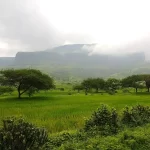
- Anand Sagar, Shegaon, Maharashtra – A Spiritual Oasis Blending Serenity & Adventure
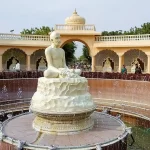
- Aga Khan Palace – Pune’s Monument of Freedom and Legacy
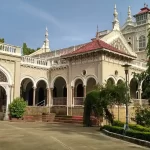
- Attari Sham Singh Railway Station – A Historic Gateway to Punjab’s Heritage

- Amritsar, Punjab: A Timeless Tapestry of Spirituality, History, and Cultural Grandeur
